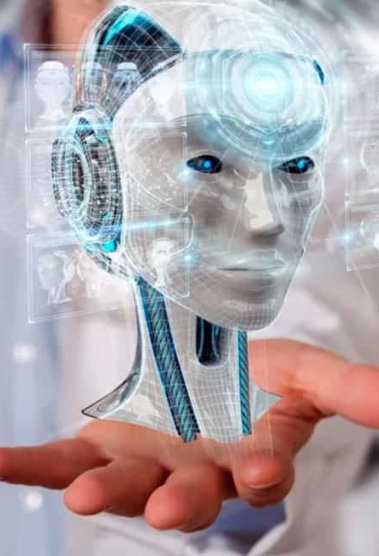How will the role of the doctor and healthcare professional change with the advent of conversational AI systems?
If one tries to ask ChatGPT how much, if at all, it thinks it is able to help doctors, its answer is somewhat disarming: ‘Yes, as a virtual assistant, I can help doctors in different ways,’ says the chatbot. ChatGPT’s answer fits perfectly into the ongoing debate in recent weeks about the increasingly predominant role of artificial intelligence chatbots in everyday life and how they will strongly impact our work.
Like all professions in the world, from the Engineer to the Journalist, the Doctor will not be excluded from this debate and will have to come to terms with the natural evolution of his profession. We will not deal here with the ethical and moral issue of AI’s ability to diagnose illnesses and write prescriptions for patients, but there is one objective fact: ChatGPT has ‘passed the medical exam‘, so – from the point of view of simple medical notions (and certainly not of the medical profession, which is quite a different matter!) – it would not have much to envy to a medical student who is about to take the professional licensing exam.
Thus, however curious and at times ‘disturbing’ it may seem that an AI is able to answer medical questions and diagnoses, we must nevertheless bear in mind that Medicine evolves through novelties, making its own discoveries and inventions that characterize each century.
Govern a vast amount of data
Doctors themselves have gone – over the centuries – from being somewhat witch doctors and shamans to healers, depending on how the context around them changed, from scientific advances to cultural ones. It is, therefore, fair to assess the advent of this software as a change of perspective in which a new tool is added to the practitioner’s professional baggage. Chatbot technology can be used in various medical fields, for instance, in searching for diagnosis information. It provides doctors with a boundless database from which to draw, thus potentially leading to more accurate prognoses.
Moreover, this software analyses vast amounts of data, thus helping to identify trends and anomalies that can enable physicians to make informed decisions and modulate treatment strategy, not least by greatly reducing the time it takes to learn this information and enabling them to arrive at their judgements more quickly and in a more informed manner.

Talking to a medical chatbot
Being, then, Artificial Intelligence, chatbots have no language barriers and are thus usable by anyone, anywhere in the world. Chatbots should not be conceived as ‘substitutes’ for the physician’s clinical judgement, but there is nothing to prevent them from becoming an ‘extension’ of the latter. In a country like Italy, where the healthcare system is under stress, and the waits for a specialist visit are often long, these chatbots could potentially represent an important ally in collecting patients’ symptoms, giving an initial (and only hypothetical) clinical judgement and submitting it to the doctor, who would then only have to ‘go through’ the shared data before reaching his conclusion and thus optimize his time, assigning the right priorities and establishing the urgency of intervention.
Indeed, each clinical case must be assessed individually, but the approach used by doctors must be constructive and not distrustful of this development. The same mistrust that we have today in using these chatbots, a decade ago, we found, for example, in Telemedicine, seen as a tool that could undermine the doctor’s authority and diminish his relationship with the patient. However, a trend that we are not seeing, and indeed the possibility of hybrid visits that exploit tele-visits and in-presence visits, is proving to be an increasingly popular formula, not least because – in 92% of cases of remote visits – there is no need for in-presence follow-up.
Today’s chatbots use a communication system that people are able to understand because they adapt the language using the same modality adopted by the user. For example, they are able to understand slang or improper words, but clear from a logical point of view, and respond to the patient by reusing them, thus facilitating their understanding. This could potentially help the patient to detect the onset of illness at an early stage and, perhaps, even induce them to see a doctor right away, an approach that – in synergy with the many potential benefits analyzed so far – could give them a healthier life and a better future for their health.



